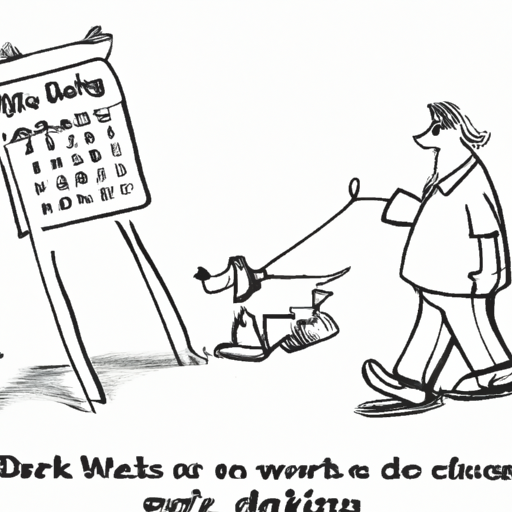As a caregiver, you desire the best for those in your charge. This includes your furry friend. One of the fundamental questions that dog owners often ask is, “How often should I walk my dog?” The answer to this is not as straightforward as you may think.
Factors Influencing Dog Walk Frequency
Every dog is unique, and factors such as breed, age, and health condition play a significant role in determining the frequency and duration of their walks.
- Breed: Active breeds such as Border Collies or Retrievers require more physical activity than less active breeds like Bulldogs or Basset Hounds.
- Age: Puppies have a lot of energy and may require several short walks, along with playtime each day. Older dogs may not have as much energy and might be fine with a single, shorter walk.
- Health: Dogs with health issues may require shorter, more frequent walks. Consult with your vet for the best approach.
Importance of Regular Walks
Walking your dog isn’t just about exercise — it’s also an essential part of your dog’s wellbeing.
- Physical health: Regular walks help keep your dog in shape and at a healthy weight. Overweight dogs are at risk for a number of health issues.
- Mental stimulation: Walks provide a change of scenery and a variety of smells, sounds, and sights that stimulate your dog’s mind.
- Training opportunity: Walks are an excellent opportunity to train your dog and improve their behavior.
Tips for Walking Your Dog
Here are some tips to make your walks beneficial and enjoyable for both you and your dog:
- Use a comfortable harness or a leash that’s the right size for your dog.
- Bring water for both you and your dog.
- Vary your routes to give your dog new experiences.
- Watch your dog’s body language. If they seem tired, it’s time to head home.
How Often and How Long to Walk Your Dog
The frequency and duration of walks may vary based on your dog’s breed, age, and health. Generally, most dogs should be walked at least once a day, but some dogs may require more. The chart below provides a general guideline:
| Breed/Age | Walks per Day | Total Walk Time |
|---|---|---|
| Active Breeds/Young Dogs | 2-3 | 60-90 minutes |
| Less Active Breeds/Older Dogs | 1-2 | 30-60 minutes |
| Dogs with Health Issues | 2-3 | 15-30 minutes |
Dealing with Weather Changes
In extreme weather conditions, consider other forms of exercise. Indoor games can help your dog expend energy without risking their health. On hot days, walk your dog in the early morning or late evening when temperatures are cooler.
What If You Can’t Walk Your Dog?
If you’re unable to walk your dog due to health reasons or a busy schedule, consider hiring a dog walker or asking a friend or neighbor for help. Remember, regular walks are essential for your dog’s health and happiness.
Frequently Asked Questions
Q: Can I walk my puppy as much as an adult dog?
A: Puppies have a lot of energy, but they also need plenty of rest. They typically require several short walks, along with playtime each day.
Q: My dog is older and has less energy. Do they still need daily walks?
A: While older dogs may not require as much exercise as younger dogs, they still benefit greatly from regular shorter walks.
Q: What if my dog doesn’t like going for walks?
A: Some dogs may be resistant to going for walks. This can often be overcome with positive reinforcement and patience.
Remember, the frequency of walks may differ from dog to dog. Always monitor your dog’s behavior and consult with your vet if you’re unsure. After all, the goal is not just to walk – but to make each walk count for your beloved pet.



